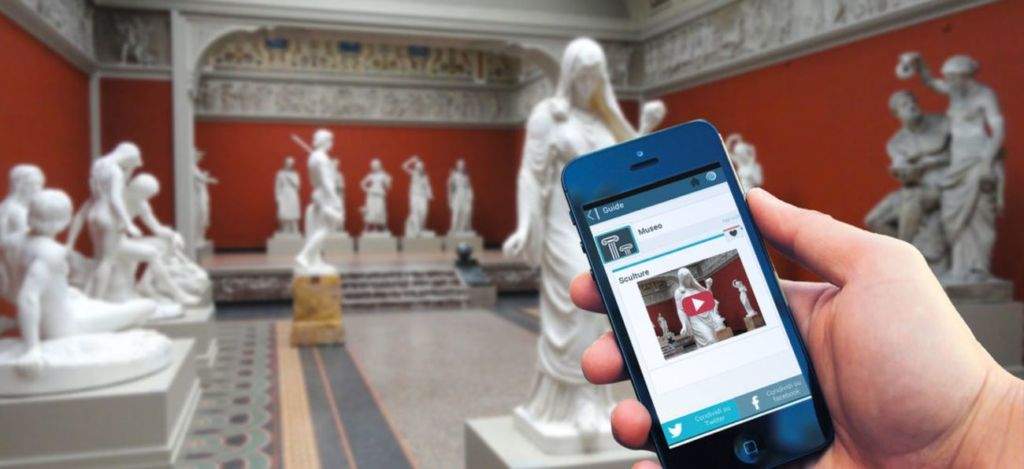Digital in museums, that's what kids would like! The study of the Liceo Classico di Barga.
Digitization in museums is being studied at the Liceo Classico “Ludovico Ariosto” high school in Barga, Lucca: an art history teacher at the school, Riccarda Bernacchi (from Lucca, born in 1975, until 2016 a researcher at the University of Florence’s Museum System, a Il Sole 24 Ore scholarship holder in Museum Heritage Management and founder, together with Lucia Morelli, of the EdaKIDS book series for Aracne Editrice), in fact came up with the idea of discussing with students, in parallel with the ministerial program, this “cult” topic, for the Ministry of Cultural Heritage and for different areas of culture, art and economy. And she put them to work to understand what kids would like from online museum proposals.
The teacher and students organized a boarding class, made up of 16 students from classes III, IV and V F of the Middle Serchio Valley High School, and researched the state of the art, visiting the websites of the biggest museums in Italy and around the world that during 2020 increased their web presence, downloaded the Google Arts & Culture app, and read in class and at home documents, specialized magazines and interviews, not least the one given by Minister Franceschini on the very topic at the end of November. They referred to the Three-Year Plan for the Digitization and Innovation of Museums, and watched carefully the promotional videos created during the lockdown of the world’s largest museum institutions.
“If initially these teenagers were bewildered and amazed,” comments Professor Bernacchi, “it took only a little to activate their creativity and imagination. The students questioned what they would expect from a museum or an online exhibition and gave their best.” The result of the boarding class ’ work is a document articulated according to the students’ tastes and according to current trends. It consists of more than 20 pages with which the students proposed alternative solutions: mostly virtual reality models, video games and apps, but also in-depth content.
There are those who were inspired by museum models for the Acropolis in Athens or the Reggia di Caserta, those who thought of a blog for the works of art seen in museums, and those who came up with thematic paths or dedicated to color and sensory. There are those who have chosen a testimonial to promote the museum (as was influencer Chiara Ferragni at the Uffizi, but also composers and musicians who today have drawn on the asset of cultural heritage to promote their art), those who have thought of short and exciting oral narratives for virtual visitors, tales of anecdotes and hidden curiosities about works of art or artists, or those who have thought of a game or an app to be created specifically. While some of these proposals are already implemented in the most forward-looking institutions, others could all be put to the test and in the field so that this critical situation becomes a real opportunity for growth and development. “Digitizing a museum, in fact,” says Riccarda Bernacchi, “is not a mere transcription of content on the web, from museology to museography, it means putting on the shoes of the public, the one already interested and the one yet to be captured, by age and interest. It means researching, investigating, sensing what culture still has to tell in the present, the past and the future.”
The idea of talking about digitization in museums with kids comes from ... contingencies. Each subject or discipline has its own specificity, has its own teaching methodology, and each of them, in this Covid-19 period, has had to come to terms with distance learning, with the 40 minutes stipulated by the various internal regulations. It is less than a time of a soccer game, which as is known lasts 45, yet that time in a virtual classroom is precious and is, at the moment, the only one possible. Therefore, explains Riccarda Bernacchi, “being able to interest students becomes a daily challenge. Appeal and then ... all the files are already open to show the students videos, various documents, presentations, readings, should the connection ever fail. Everything is geared toward optimizing content and minutes, and especially in piquing the kids’ interest from a screen, in front of which, they will have to spend at least another 5/6 hours during the day. Art history is one of those subjects, which one hardly thought could be covered online, except in short and measured ad hoc courses. Yet, so it was. The question, which was tried to be answered, was to transmit knowledge through new modalities. Where knowledge is not synonymous with notion, but with fragments of life lived by artists and their works of art in different eras, with different conceptions and worldviews, with the same human, professional and family anxieties that each person has experienced and still experiences.”
 |
| Digital in museums, that's what kids would like! The study of the Liceo Classico di Barga. |
Warning: the translation into English of the original Italian article was created using automatic tools. We undertake to review all articles, but we do not guarantee the total absence of inaccuracies in the translation due to the program. You can find the original by clicking on the ITA button. If you find any mistake,please contact us.





























